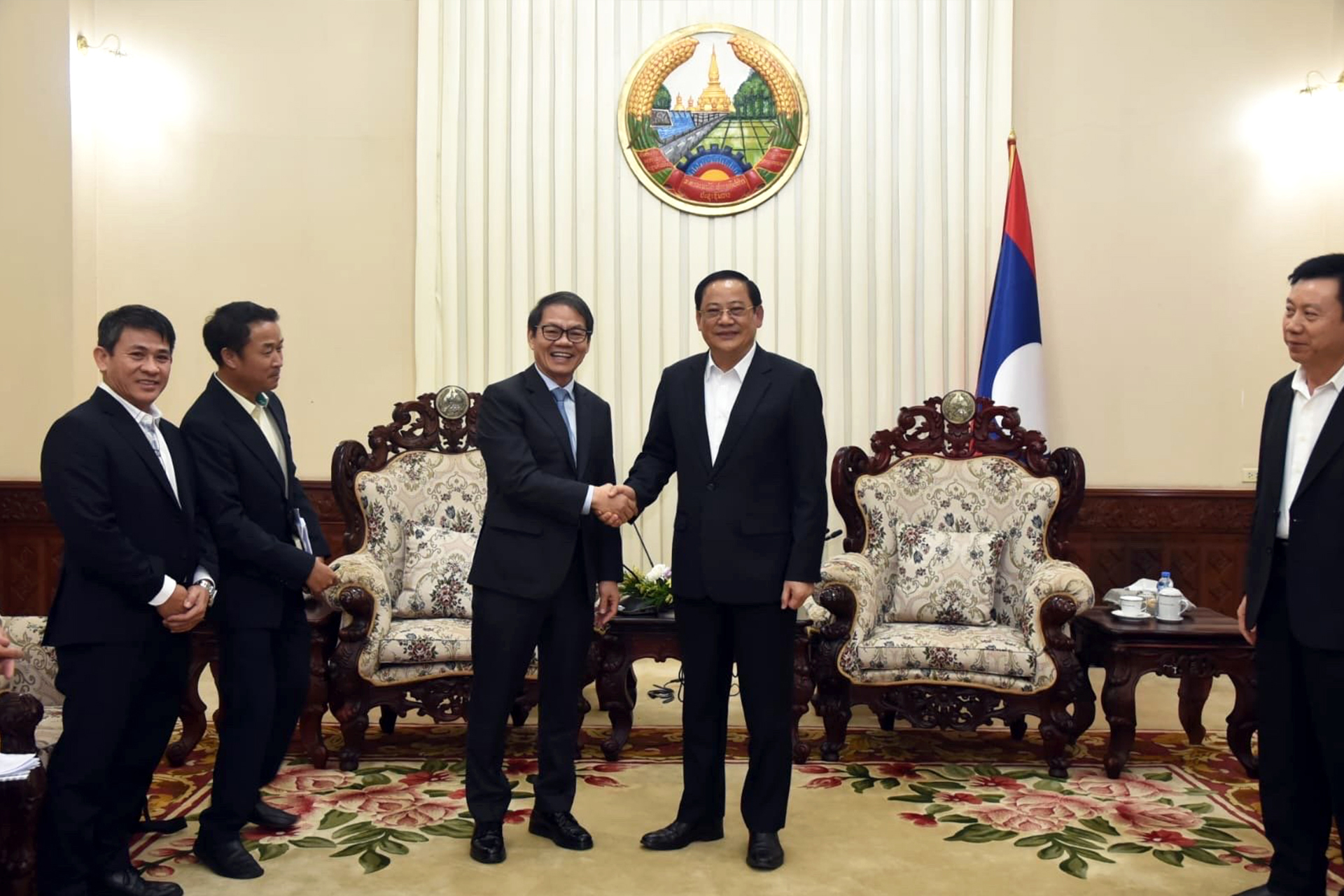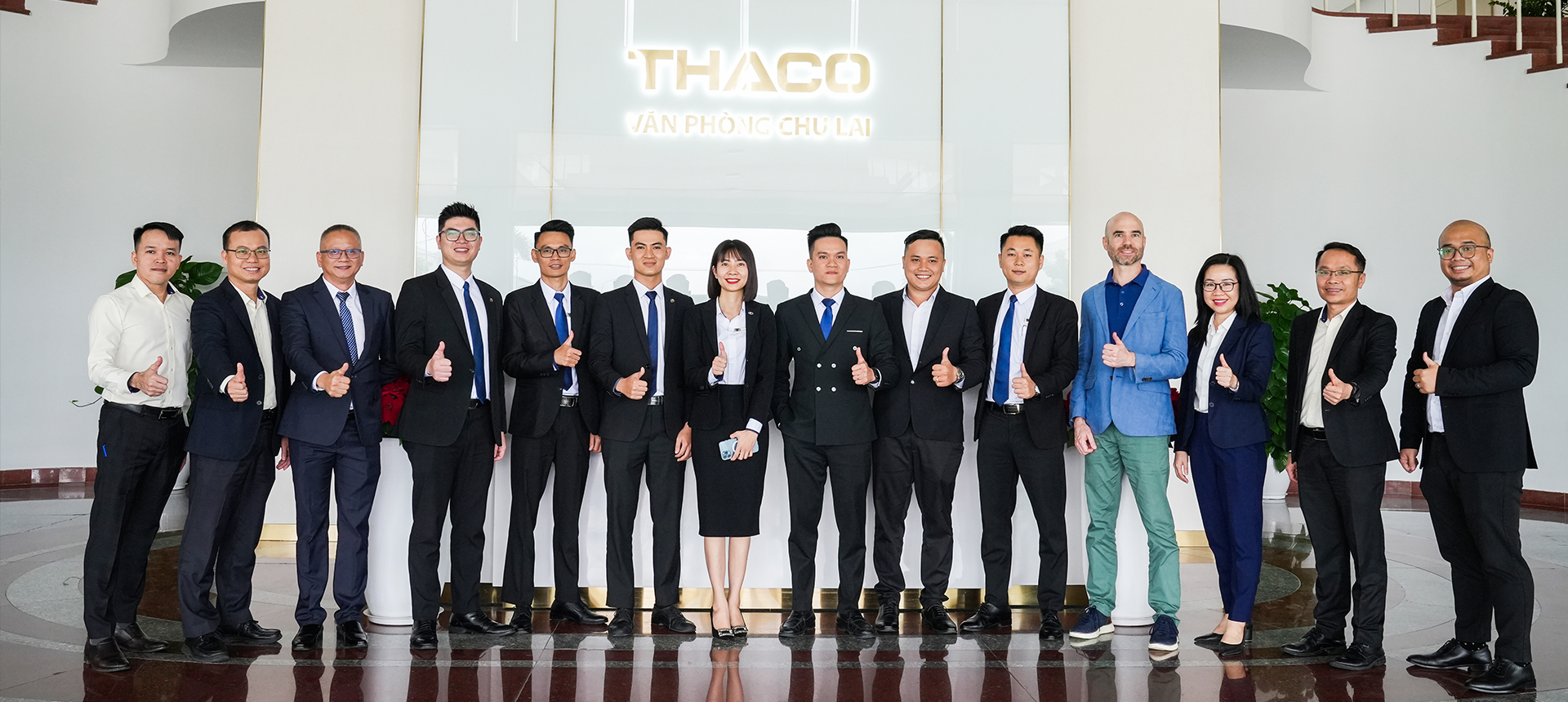THACO Chairman: Business must create sustainable values
For THACO Chairman Tran Ba Duong, investments are stepping stones. True progress lies in crafting sustainable values in Laos, fostering shared prosperity and deepening the enduring ties between Vietnam and Laos.

From a humble automobile manufacturing and assembly enterprise, THACO has expanded to mechanics and supporting industries, firmly planted in the ground of industrial expertise. The commitment to industrial mastery has served as the springboard for its leap into agriculture.
In a bold move, THACO stepped in to revive HAGL Agrico's struggling agricultural projects in 2018. From there, a new vision bloomed: a large-scale integrated agricultural production model teeming with life. To understand the depth of THACO's commitment to Laos, Government Electronic Newspaper sat down with THACO Chairman Tran Ba Duong for a candid conversation.
Large-scale agricultural production model
Could you please give us a review of the Group's agricultural investment in Laos today?
Mr. Tran Ba Duong: In 2018, faced with HAGL Agrico's financial woes, I answered their call for support. A strategic acquisition of 27.63% stake marked the first step, soon followed by my appointment as Chairman in 2021. Thus began THACO's stewardship of HAGL Agrico's projects in Laos.
After HAGL's stumbles in Laos, from rubber, bananas, and raising cattle due to limitations in soil, infrastructure, electricity, premises, and the COVID-19 pandemic, THACO decided to change our course to large-scale integrated and circular agriculture production.
We pored over the blueprints, learning from past stumbles in infrastructure, power, housing, and facilities. Now, we are building everything that needs to build a large-scale, integrated and circular agricultural ecosystem. We are developing intensive farms for bananas and pineapples, while building farms with cattle ranches intertwined with other fruits like durian, grapefruit and the like.

Our large-scale integrated circular agricultural complex spans 27,384 hectares across Attapeu and Sekong provinces. In the system, 10,000 hectares are dedicated to intensive fruit cultivation where 8,000 hectares of bananas sway alongside 2,000 hectares of pineapples. Another 14,000 hectares is used for fruit trees combined with raising cattle, including 5,000 hectares for mango, grapefruit, durian and the rest housing 210,000 cattle heads.
In addition, there is a 200-hectare industrial park incorporating agricultural material and equipment factories, fruit and agricultural product factories, offices, warehouses and logistics operations centers.
Possibly speaking, we believe the model we are building is consistent with Laos' development strategy, which focuses on large-scale organic agriculture. Recently, THACO made a proposal to establish a new company in Laos by merging two previous companies of HAGL Agrico, Hoang Anh Attapeau and Hoang Anh Quang Minh, with a capital of $750 million. From vigorous evaluations to on-the-ground surveys, the Laotian Government has green lit the project at the Vietnam-Laos Investment Promotion Conference.
Even nestled deep in the Laotian countryside, THACO's agricultural project hasn't escaped the eyes of the nation's highest leaders. From his days as Deputy Prime Minister to his current tenure as Prime Minister, Mr. Sonexay Siphandone himself has graced our complex with his visit.
Towards sustainable value
What advantages does the industry foundation bring to THACO in agricultural development?
Mr. Tran Ba Duong: In agriculture, the most important is the output and the second is the scale of production. When we do small production, management in agricultural production may be easy, but on the contrary, finding markets can be very difficult.
Investing in large-scale agricultural production requires the application of industrial management methods to the entire supply chain, from seeds selection to land preparation, planting, care, harvesting, and market consumption.
In addition, scaling up agriculture demands mechanization, as it cannot be achieved only by human muscles. So we have a Sub-holding specializing in mechanics and supporting industries to apply mechanization solutions in agricultural production.
For large-scale agriculture, construction is also a big problem. We must build a large system of water reservoirs, irrigation systems, electricity and roads, and fresh fruit packaging factories. Besides, we are also producing organic cattle fertilizer and agricultural materials for cultivation by using industrial methods. Instead of letting imperfect fruits go to waste, we have processing facilities that transform them into delicious products, maximizing resources and minimizing food waste.
Large-scale agriculture requires more than vast fields; it demands an industrial mindset. Crops and livestock are the main inputs.
For example, in the closed-loop system, at first we raise cattle to breed, graze grass, and then fatten them. We use discarded fruits to feed the animals, while waste products are transformed into bedding, green manure. Cattle manure then undergoes further processing to produce organic fertilizer, returning vital nutrients to the fruit trees that initially provided sustenance. We even raise fish and microorganisms in the water reservoirs to gradually move towards zero waste in agriculture. In such approach, transportation costs will be greatly reduced.
In agricultural, circular production in a large area is very important. We have to come up with a production-cultivation model first and then build a closed supply chain from production to consumption. After that, we will guide farmers to participate in this supply chain.
In our view, investments are only stepping stones. True progress lies in crafting sustainable values in Laos, fostering shared prosperity and deepening the enduring ties between Vietnam and Laos.
Developing agricultural tourism in Laos
Having dedicated time to understanding Laos' dynamics, what are your evaluations of its market potentials and how do these qualities align with THACO's investment strategic vision?
Mr. Tran Ba Duong: Agriculture is one of the key sectors in Laos, claiming nearly half of its GDP and employing 90% of its population. The nature is also its advantage, with steady rainfall and a temperate climate nurturing its agriculture wealth.
In Southern Laos, the fertile soil is ideal for crops and cattle. Lush pastures flourish where land prices and labor remain surprisingly kind.
While agricultural activity remains modest, Laos's land boasts untapped potential. The minimal environmental impact of past agricultural practices minimizes the presence of pollutants and contaminants. Therefore, there are great potentials for a landscape ideally suited for implementing environmentally conscious agricultural techniques, promoting non-chemical biotechnology, leading to clean and sustainable agricultural markets.
With half its population under 25 and 60% under 35, Laos's vitality promises a ground for foreign investment, particularly from Vietnam. This stability pairs with welcoming leadership, a generous landmass, and a climate ideal for large-scale agriculture.
THACO's agriculture effort in Laos extends beyond crops. Eco-tourism ventures are planned, offering visitors unique experiences within our large-scale complexes.
Many benefits for foreign investors
What support policies does Laos have for investors like THACO in particular and foreign businesses in general?
Mr. Tran Ba Duong: Since 2016, Laos's revised Investment Promotion Law has breathed new life into its investment climate, attracting global interests.
The Lao government also applies special support policies on custom clearance and income tax exemptions in the Investment Promotion Law. For example, imported equipment that is not or not yet locally available and destined for fixed asset use in Laos, or exporting goods and equipment for agricultural and industrial mechanical engineering will enjoy zero import tax and VAT.
The policy framework also encompasses geographically differentiated investment and profit tax incentives, alongside land rental concessions and land use concessions.
Laos is rolling out the welcome mat for Vietnam's top investors, eager to leverage their expertise in import and export. They're creating favorable conditions in key sectors, while revving up infrastructure development, including highways that will stitch the two countries closer together.
In 2015, Vietnam and Laos took a major step towards closer economic ties by signing the Border Trade Agreement. This deal slashes import tariffs to zero for goods originating in both countries. For Vietnamese businesses venturing into Laos's border provinces, their agricultural produce grown and processed there can be exported back to Vietnam with zero import tax and VAT.
Source: Government News








